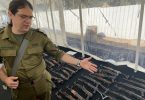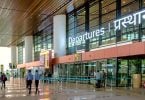ເຈນ:
Yeah. I know that Serbia, usually you’ve got ATRs, you’ve got A319s and so on. How do you tactically, deploy them?
ຈີຣິ:
Look, I fully agree what he said now, so flexibility is key. And actually, what you have now is a benefit is that you have your full aircraft fleet available for the ad hoc changes. When you will be operating, let’s say on a hundred percent of your plane capacity, you have only operational spare, and you don’t really have too many things what you can do last minute. However, now when you operate on, let’s say 78% of the capacity, you have quite a big, flexible opportunities to swap and update if necessary.
However, what we also saw as a challenge was that if you continue to operate it as a hub and spoke, and you are significantly reducing the network, the first which will be compromised is obviously connectivity. We had to completely reshape and change our network and concentrate on the key days of the week, where we still want to have the decent connectivity. And there are some days where basically we are operating almost on the 80, 90% of the 2019s level, but there are also days where we hardly have a flight.
This was kind of like challenge, not only for us, but also for the suppliers and other airports and handling partners, which, for their planning. So, on the other end like this, flexibility give us really advantage to maintain a decent connectivity. And also, with the upgrades and downgrades, sometimes we are even sending ATRs to Berlin, which is typically a jet route, in order just to maintain the connectivity and allows the people to connect to their final destination within our region. It’s definitely a benefit.
ເຈນ:
What percentage of your customers of your customers are connecting?
ຈີຣິ:
At the moment it’s around let’s say 30, 35%.
ເຈນ:
A significant share of that.
ຈີຣິ:
Significantly. It’s significantly lower than it to use to be, but it’s also because the connecting traffic is also a bit more difficult to manage in a way that some of the countries are imposing also as a different restriction for the transfer, not only for entering the country, but also for transferences keep changing. So especially also, if you are connecting, let’s assume you are taking passenger from Belgrade via Copenhagen to China, you already have to make sure that this percentage is actually allowed to transfer in Copenhagen to China, and that’s kind of challenging, especially we have to separate tickets and you have to manage that as well as the first operating carrier on that route.
ເຈນ:
Tamur, at Swiss also, what’s the logic behind the network right now? Is it optimized to ensure as many connections as possible? Or is it more around on the traffic?
Tamur:
No, I think we have different phases. Right now, we are in the phase where you’re limited to mostly point-to-point business, where you are optimizing mainly to keep connected Switzerland to the Europe and also to the world. We can sustain this long haul network as we have it right now, mainly due to the cargo in Europe. We serve the most important destinations, but of course with less frequencies so we try to maintain a reasonable within the system, but we have less depth and less frequency offered.
This will change in the ramp up in the sense that we, of course building, as I mentioned, on a hub and spoke system. As soon as we see demand picking up and given the fact that we have less point-to-point routes elsewhere, we will definitely see also quite a number of transfer passengers then in the second phase, and you would see a higher share then of transfer, be it on Europe to Intercon or Europe to Europe as part of the hub and spoke system.
And ultimately you have to find a new balance then. It depends also on the competition, but ultimately you have to find a new balance between these two systems. And you, as I said in Switzerland, we have traditionally very strong, long haul premium business. And that’s definitely something we will also focus on in the future with a reasonable then connection system that connects to this long haul. In the splits, you will definitely see a higher share of digital destinations. I think that is something, as we discussed before, is reflecting somewhat the trend change, but the overall logic will still be the same, sizing here is important and finding the right dimensioning.
ເຈນ:
Jiri, I have to ask this. Your partner [inaudible 00:29:00] had to stop flying the Belgrade route a while back last year. And obviously the connections through Europe are difficult or too non-existent because of the pandemic. What’s the status of that relationship, code sharing and so on?
ຈີຣິ:
Look, we recently renew our old code share agreement and basically, we are maintaining the connectivity via the main ATR gateways in Europe. Any culture agreement being smaller regional player is important for us because it’s giving us access to the more global network plus also giving us extra fleets to our regional network. So, we are maintaining the strong cooperation with [inaudible 00:29:42]. The culture is quite expanded, but of course there will be most likely less demand since a direct flight is currently suspended. And we are developing the other cultural partnership to cover that part of the world.
Last year, during pandemic, we signed a culture corporation with Turkish airlines. We fly daily to Istanbul and we have wide access, and we will be expanding that culture cooperation further as well. It’s basically any airline partners, which is helping us to add additional fleet to our network and we can enlarge our footprint, we are definitely always open to look for civilian solutions.
ເຈນ:
One final question before we have to wrap up. I just recently saw an overview of startup airlines projects, and quite a few of them are in Europe. So, it seems people are using the opportunity to start anew here. Do you see that as a threat to your airlines and some of the markets? Maybe Jiri first?
ຈີຣິ:
Not at all. I think that actually after this crisis, we still need to see more consolidation and what will be happening with the European careers because we are definitely not the content and which can be proud on the level of the consolidation.
ເຈນ:
Tamur? Startups?
Tamur:
Yeah, I think we will come out of this stronger. We are not currently fighting for survival. We’re fighting for our future. There are others who will definitely fighting for survival. At the moment you can’t see it really because there’s so much government money spread out into the whole industry that you cannot really see who has really a valid business model and who hasn’t. You will only see that, I think, later.
And then I think consolidation would rather happen by carriers entering or carriers leaving the market, rather than a short-term consolidation in terms of airlines buying other airlines. It’s like those deals that have already been agreed to before the crisis. I think that will be the question rather in one or two years, not immediately. And then further on in the perspective five, there is definitely there’ll be more consolidation then in different formats and maybe an M and A activity will start again. But I think it will take time until that happens. And so, anybody who starts up now in these days has to be very bold. I wish them good luck, but I also think there will be new entrants also going down again. And as I said, some will also leave the market in a reasonable time.
ເຈນ:
Well, Tamur, Jiri, it was great to catch up with you to talk to you about the industry. Thanks for joining.
#ການກໍ່ສ້າງການເດີນທາງ






















